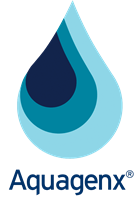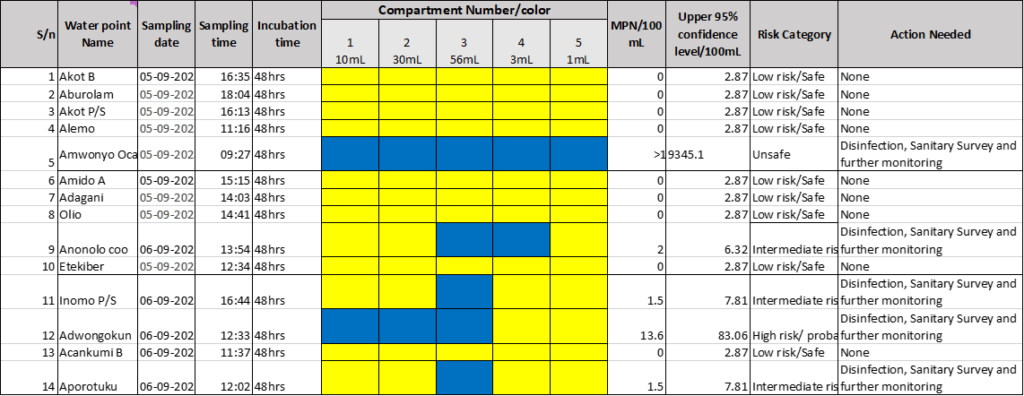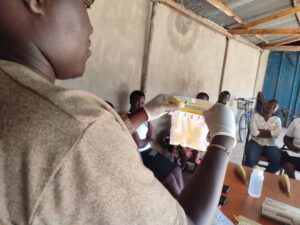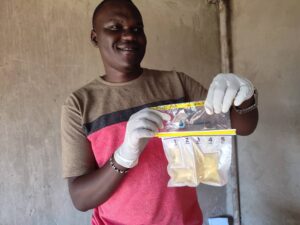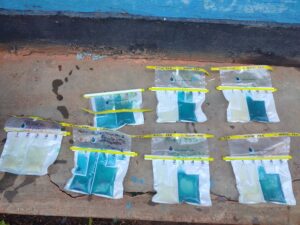International Lifeline Fund Uses CBT EC+TC MPN Kit
For Borehole Assessments in Northern Ugandan Districts
International Lifeline Fund sparks catalytic change across the developing world by implementing low-cost, replicable interventions that improve the quality of human life. To achieve this mission for impoverished and vulnerable individuals in Sub Saharan Africa and Haiti, they provide access to clean water and clean energy.
https://lifelinefund.org/
Problem
International Lifeline Fund (ILF) works in the northern Ugandan districts of Apac, Kwania, and Otuke. They needed to conduct water quality assessments of boreholes developed by their organization to ensure continuous water quality and identify boreholes that require water quality improvement. ILF also needed to ensure sanitary collection of water from drinking water sources. Lab access in these remote, rural regions was unavailable, therefore ILF needed a field test that did not require labs and can be used in low resource settings.
Solution
ILF selected the Aquagenx CBT EC+TC MPN Kit for water quality testing to detect and quantify E. coli and total coliform bacteria in 100 mL water samples.
A team of dedicated field data collectors underwent comprehensive training over a span of two days, focusing on adept usage of the Aquagenx kits, proper sample handling during and post-collection, contamination prevention, and the secure disposal of waste generated during the activity. It is crucial to note that all wastewater, used bags, and additional supplies were responsibly disposed of through incineration upon completion of the task.
Underground water samples were systematically gathered from 47 hand pumps with Whirl-Pak Thio-Bags, ensuring each sample reached the 100mL fill line. Subsequently, one packet of CBT EC+TC growth medium was introduced into the Thio-Bags and gently agitated. The sample was then transferred to the Aquagenx Compartment Bag with five compartments. Each compartment was filled to the designated fill line, and the locking seal clip was utilized to securely seal the bag.
The samples were incubated at a temperature of 25-30°C for 48 hours, after which the results were examined. The distinct color changes in the various compartments were compared and interpreted using the Aquagenx CBT Most Probable Number (MPN) table.
Test Results
Although the Most Probable Number test results revealed health risk levels within potable ranges, about 21.3% of the boreholes showed test results requiring implantation of correction.
The 47 water points were sampled over a two-week period on various days. The breakdown of results is as follows: one water point (2.1%) was classified as unsafe, two (4.3%) were deemed high-risk sources, one (2.1%) fell into the ultra-risky category, six (12.8%) were categorized as intermediate risk, and 35 (78.7%) exhibited low risk, suggesting probable safety.
The following table presents an excerpt of 14 results from the comprehensive dataset. It includes information on sampling dates, incubation periods, compartment colors post-incubation, MPN/100mL values, risk categories, and any recommended corrections or actions needed.
Table 1: Snapshot of Results from Testing 47 Sampled Water Points
Conclusion
Boniface Okwir, WASH Engineer at International Lifeline Fund, asserts, “The Aquagenx test kits represent a user-friendly solution for in-field water quality monitoring, enabling us to maintain a continuous assessment of water sources developed for communities. The utilization of CBT Kits empowers us to make informed decisions regarding the remediation requirements, if any, by providing dependable data. Our commitment to the continued use of Aquagenx test kits is underpinned by their exceptional convenience, seamless implementation, and substantial cost-saving attributes.”
